
Super Robot Wars 30 Review
Celebrating 30 years of giant robot warfare, Super Robot Wars is a series unlike any other. I’ve lost count of how many there are now; it’s well over 80 for sure if you consider all the numerous remakes and ports as their own entries. Most SRW games combine numerous mecha anime series that have graced the medium since its conception. The series is most recognized for its stellar, intricate attack animations that have only gotten more complex and detailed over time.
Three decades later, the unthinkable has happened. A new SRW game with multiple licensed anime IPs received an official worldwide simultaneous release. Super Robot Wars 30 has a lot riding on its shoulders as a faux ambassador for the long-running strategy RPG series to newcomers internationally. Luckily, it’s an excellent game and mixes up the SRW formula substantially for veteran players too.
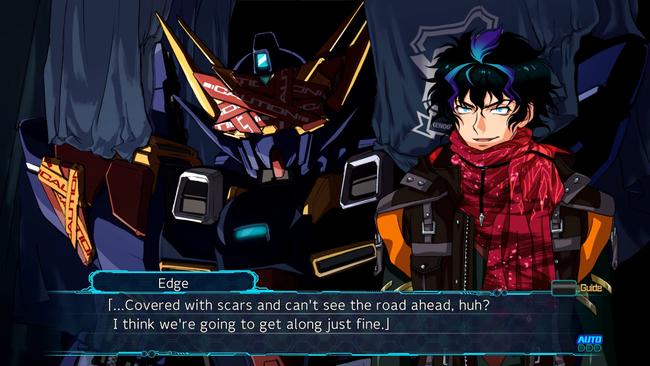
Most SRW games tend to be structured linearly; players go from one stage to the next in a straightforward fashion with the occasional temporary route split that joins back into the main path after three to five levels. This isn’t the case for SRW 30, which opts for a more open-ended, non-linear choose-your-own-adventure approach. SRW has dipped its toes into this style a few times, with entries like Super Robot Wars Impact.
After players choose to play as Edge or Az - the male and female protagonists - they’re presented with a choice on whether they’d like to start on the Earth or Space route. This will determine which batch of anime series they’ll encounter first; the Earth route will have characters from Gridman, Mazinger, and Combattler V join up early on and on the flip side, the Space route has Victory Gundam, Majestic Prince, and Gundam Narrative. All of them will eventually join the player’s roster, but SRW 30 gives the player agency in who they want to recruit first.
Let’s walk through how this manifests. Both routes have the same starting stage, just set in different environments; the first stage has Edge or Az stumble upon the mysterious Huckebein 30 robot and defends the would-be home base Dreisstrager warship from incoming foes as it slowly launches for the first time into live combat with a brand-new crew.
This opening stage, like in other several SRW games, also establishes a lot of crucial world-building elements to contextualize the story because after all, the plot in mainline SRW games are heavily intertwined with the stories of the anime IPs involved in it. Yes, it is absolutely fan fiction, but it is professionally written fan fiction. If you’re invested or familiar with the lore of most of the series involved, it is hard to not appreciate the amount of dedication the writers have at making sure plot threads from mecha series are woven together in a way that their intersection makes sense, as they now share a common world for the purposes of a crossover game’s main story. Beyond the flashy attack animations, I have always been appreciative of how SRW goes the extra mile in laying out what the state of the world is, because not every single series represented begins at their “episode 1”; sometimes several episodes or even seasons have already passed for them when they first appear in the game.
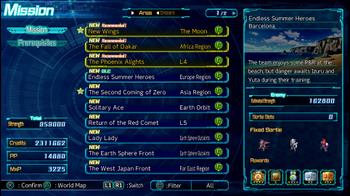
Anyway, after completing the first stage in the Earth route, for instance, two new missions are available for players to pick; one will recruit J-Decker first and the other will have the Combattler V crew join you first. Whichever one the player decides to play first, they’ll still get to do the other stage right after. The only difference is that the second stage’s events are altered because they now account for players having completed the other option first, so the characters that just joined may have some dialogue or interactions in that stage.
This early instance serves as a microcosm of how flexible SRW 30’s narrative structure seemingly is. Many non-linear games RPGs often falter in this regard. A recent one that comes to mind is in Fantasian’s second part, when players have to reunite with their lost party members and the game gives players the freedom to pick who they want to rescue first. Party members they rescue early on don’t interact with the later characters, because the game doesn’t account for whether that character would be in the player’s party by then, due to the open-ended nature of how it was all laid out. Thus, it results in a stilted narrative presentation as more talkative characters would awkwardly remain silent even during touching moments over certain reunions.
Meanwhile in SRW 30, I was blown away at how many dialogue permutations a stage could have. Of course, I imagine not every single stage has multiple different variants, but it was enough to display a sense of cohesion and appropriate camaraderie when it mattered. What honestly surprised me is that even characters introduced in DLC participate at times during certain scenes in stages; I thought their interactions would only be confined to the DLC stages or be silent altogether, but they seem to have a good amount of dialogue interspersed into the base game’s content.
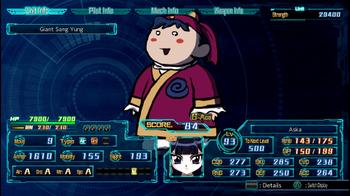
After J-Decker and Combattler V join up, players are funneled into Gridman’s introductory stages that result in the recruitment of the Gridman Alliance. Certain key stages, like this, advance the overall main story and unlock the next batch of new levels that can be tackled in any order. SRW 30 does try to point players with decision paralysis in the right direction with a recommendation on which stage to do next based on their current power level. A few stages will also be marked with a star to indicate those are the ones that must be completed to move the plot forward.
Instead of only two stages initially available here, roughly eight or so levels make up the second batch of stages, and they all have new units and/or characters that join the roster upon their completion. If you want the Magic Knight Rayearth cast right away, you’re free to do that now. Want more J-Decker robots to play around with? Go for it. If you recruit the Rayearth characters before the Knight’s & Magic crew, they’ll have a unique interaction with them and vice versa.
That’s pretty much the main gameplay loop of SRW 30. It doubles down on letting players decide what they want to do next and set their own goals simply based on which series or mechs they like.
A plethora of optional missions also open up as the game progresses. Several missions present some fixed conditions, such as an extremely limited player unit deployment to combat an overwhelming swarm of foes, while others group past bosses together. Some of your mechs also receive new attacks or receive upgrades when they reach a certain number of enemies shot down. For example, Gridman unlocks most of his arsenal behind optional missions that unlock as he continually reaches milestones of enemies he has destroyed; Uso has the opportunity to receive his V2 Gundam and V2 Gundam Assault Buster upgrade earlier in the game if he reaches certain milestones too.
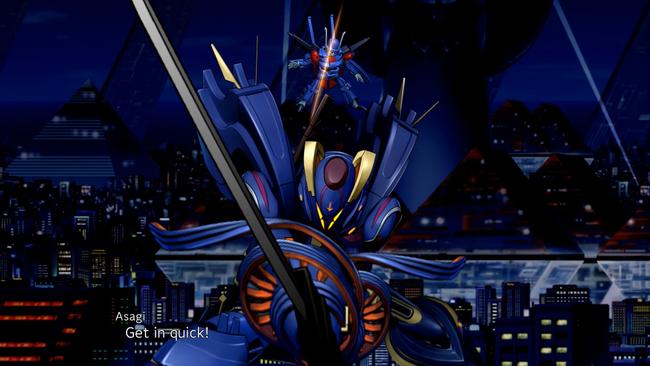
Another interesting change from recent SRW titles is that Super Robot (SR) points are not present in SRW 30. SR points were optional bonus objectives during missions that added an extra layer of challenge. These usually consist of clearing a map in a certain number of turns or reducing a boss’s HP to 0, but they retreat immediately when they’re low on HP. SR points determined the game’s difficulty level; accruing them consistently would bump it up. In SRW 30, players simply decide what difficulty they want from the get-go and can freely change them in-between missions.
Special relic missions act as a quasi replacement for SR points, instead. These challenge stages are only found by manually spotting their nodes on the world map and are not listed in the mission select screen. They’re significantly tougher than most missions, but the powerful parts that they reward are usually worth it. I did find it a bit of a pain having to re-check time and time again when and where new relic missions populated; they aren’t all available from the beginning and the game doesn’t let you know when new ones spring up. Plus, there’s no indication of where they are on the world map until you hover over their mission mode, so it leads to an odd few minutes of checking if you’re missing any after several stages have passed.
Aside from the vast changes in its narrative structure, SRW 30 also brings a new element to the way it doles out upgrades to the player’s roster. This revolves around the AOS Update system, in which players can upgrade the Dreisstrager’s facilities with Mission Experience Points (MxP) gradually. These facilities are the Bridge, Hangar, Engine Room, Training Room, Quarters, and Lab; each of them contains three paths that continually get more powerful upgrades the further players invest in them.
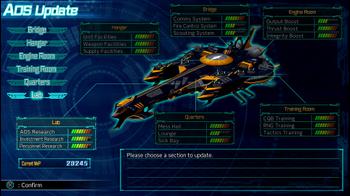
The Dreisstrager’s Bridge, for example, has a Comms System, Fire Control System, and Scouting System. Comms improves the Command skill for Dreisstrager’s captain, Mitsuba, so any unit near the Dreisstrager receives passive stat buffs. Fire Control enhances the Dreisstrager’s accuracy and Scouting raises its mobility. Other facilities focus on different things as well; the Training Room gives damage bonuses to melee and ranged attacks, while the Lab can raise the maximum upgrade cap of units. AOS Update also contains useful parts and once one branch of a facility is fully upgraded, players can choose to invest a ludicrous amount of MxP for a tremendously powerful part.
I enjoyed the AOS Update system quite a bit. It provides a fun backbone, although if players play their cards right, certain upgrades in AOS Update can truly shatter the difficulty curve in SRW 30. Besides the AOS Update, upgrading robots and pilots in SRW is largely similar to recent SRW titles; credits can be spent on boosting a mech’s stats and weapon power, while Pilot Points (PP) purchase skill programs for pilots to improve and/or learn abilities.
SRW 30’s gameplay doesn’t do anything revolutionary, nor does it really need to. It is still a simplistic strategy RPG where players choose who they want to deploy, move in range for an attack, and pick which iconic attack they want to utilize in a given turn. Each pilot can cast Spirits to give various buffs or debuffs on themselves, and sometimes others.
Most of SRW 30’s gameplay refinements are in its HUD. There is now a persistent status bar at the top left corner of the screen that gives a quick glance of how the battle is progressing. Its most useful feature is simply letting me know how many enemy units are left at any given time. There are also a few other minor HUD improvements that I liked, including a new display that gives your critical hit chance,and the life and energy bars are now curved, akin to a UI aesthetic you might see in a cockpit. It’s refreshingly sleeker.

Dynamic intros to attack animations have also been introduced in SRW 30. In earlier titles, when a unit started up an attack animation, they would have a second to stand idly in place and then perform their attack. Now in SRW 30, some units have a flashy intro before it cuts to their attack animation. Red 5 from Majestic Prince explodes into the fray as it skillfully dodges shots left and right, Combattler V approaches menacingly, and the Lancelot Albion has a lovingly detailed close-up of the mech from the get-go right before it unleashes one of its most damaging attacks, for instance. While I welcome this change, it definitely has room for improvement in its implementation. There’s too many black screen transitions during battle animations to accommodate them leaving several attack sequences disjointed and somewhat jarring.
Another welcome enhancement that has been unexpectedly long overdue is that you can now turn off the text boxes, portraits, and gauges during attack animations without getting rid of the text themselves, giving the glorious attack animations a bit more screen real estate. This automatically activates during the fast-forward toggle or you can turn it off altogether as a setting in the options. My selfish nitpick is I would have liked a toggle to turn this feature on or off at any time *during* an attack animation running at normal speed, so I could still keep track of my unit’s life and energy bars without sacrificing game speed or resorting to the all-or-nothing approach.
The game also features a toggleable auto-battle mode for players that simply want to push through a mission field with foes that won’t be a threat to them. There aren’t many customizable features to the auto battle mode, aside from very simple vague options to have a unit go on the offensive or stay on the defensive. If you were hoping for something somewhat resembling Final Fantasy XII’s Gambits or Disgaea 6’s Demonic Intelligence system, this is definitely not it.
I imagine auto battling in SRW 30 is most intended for the infinitely repeatable front missions. After a certain point in the game, these stages unlock and keep on reappearing again and again after a non-front mission is completed. If players want to power grind either their levels or a pilot’s killcount, they’re free to do it again and again and again to their heart’s content.
For as much as SRW 30 gets right, it still bears the stigma that has plagued the series for quite some time now: there simply is not enough variety in its map layouts and objectives. Like many others before it, SRW 30 is filled to the brim with wide-open maps where pretty much any unit from both sides can go anywhere. It doesn’t utilize its environments to craft tricky situations or circumstances like causing a bottleneck, in which units are forced to push through.
An overwhelming amount of stages throughout the game have the same objective - clear all enemies on the map, and that’s it. There’s a lot of repetition as far as its gameplay scenarios go; it’s often cool to see how a SRW game adapts a certain episode or story arc from a show when its story plays out, but the mission structure contextualizing it often leaves me unsatisfied. There is one specific stage in SRW 30 that did manage to surprise me in how it chose to present it though. If you’re familiar with how the Code Geass: Lelouch of the Re;surrection movie played out, the way SRW 30 tackles it is neat!
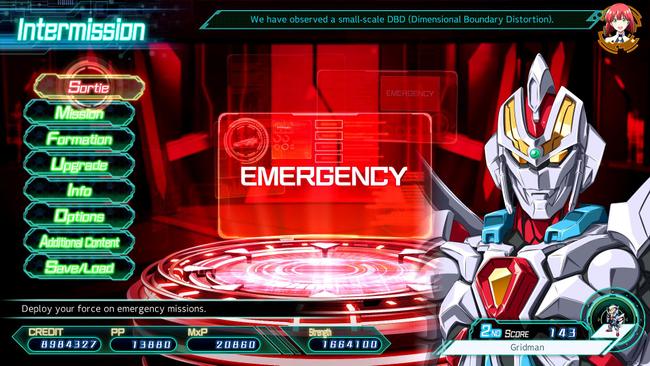
Further on, one of the weirdest intrusive mechanics in SRW 30 is emergency missions. Later on in the game, it will have times where the story arbitrarily forces you to do a key mission with no rhyme or reason behind it. All other missions, besides the minor optional ones, are locked down and unavailable to select until the emergency mission is done. Sometimes, emergency missions will chain into one another back-to-back, and every player that I’ve spoken to about it has had these missions pop up at a different time from one another - so there’s no consistent way to entirely bypass it. The danger behind emergency missions is that progressing through too many key missions can sometimes leave players missing missions permanently for that playthrough. For a game that emphasizes player freedom, the implementation of emergency missions is a frustrating misstep.
At the time of writing this review, DLC 1 has been out for a few weeks now and DLC 2 is coming soon. SRW 30 suffered a lot of bad bugs after rolling out DLC 1; among them was that it deleted a certain pilot and their mech, unless a player still had a key mission they would appear in, which (forcefully) added them back. Obviously, this option wasn’t available for players who were too far in and didn’t have any key missions left, and it took well over a week to get resolved. On top of that, the roll out of DLC 1 introduced new crashes for several players and some have yet to be resolved at the moment.
Another legacy pet-peeve of mine is the SRW series’s recent focus on recreating a “cinematic” feel to its battle animations that aim to follow an anime’s source material lockstep, right down to its choppiness. Don’t get me wrong; I love a lot of the animations recently, but it has been irritating me more and more ever since SRW V that the deliberate cut to framerate for a lot of iconic attacks do not mesh well with how smoothly the rest of the game runs. There has to be a happy medium to execute these attacks more smoothly. I miss the slick choreography from earlier entries like SRW Alpha 3 and SRW Z where things flowed more naturally.
Despite my numerous grievances with SRW 30, and the SRW series as a whole recently, I still think it is one hell of a game and it is absurdly long. My first playthrough after having done mostly everything clocked in at around 130 hours. A lot of the character interactions were a blast to witness. Seeing a hypothetical version of Char after the events of Char’s Counterattack interact with a post-Code Geass R2 Lelouch was a real treat. Having the Getter Robo crew act as mentors for the Rayearth trio is awesome and wholesome. Witnessing a better, improved version of the Gundam Narrative cast because of how past Gundam protagonists influence them is a cool thing to see. There are so many sweet and funny moments throughout SRW 30’s plot that I loved.
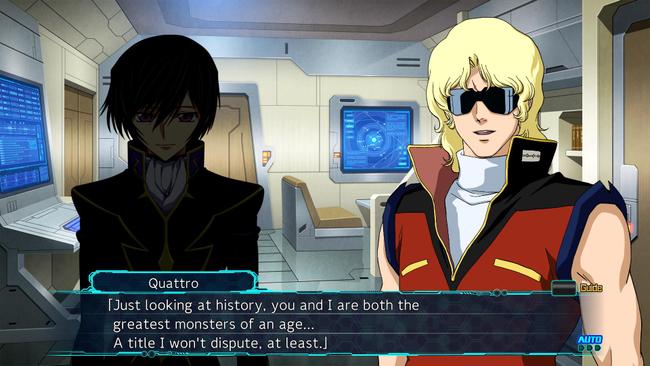
Super Robot Wars 30 is a fantastic celebration of the franchise’s past 30 years. There is a lot of love and care put behind honoring its past and present. Even its soundtrack has a lot of new remixes and arrangements to legacy tracks. The roster of SRW 30 act as solid ambassadors for the series’s debut on the worldwide stage, even including a niche crossover sequel novel to GaoGaiGar and Betterman.
SRW 30 is a great starting point for newcomers to the series; it is also a milestone for veteran SRW players due to how it has revamped its narrative structure to be more open-ended and non-linear. If there is one common thread throughout every single SRW game, it has always been to form your giant robot dream team and have fun breaking the game in half with them. SRW 30 is no different.